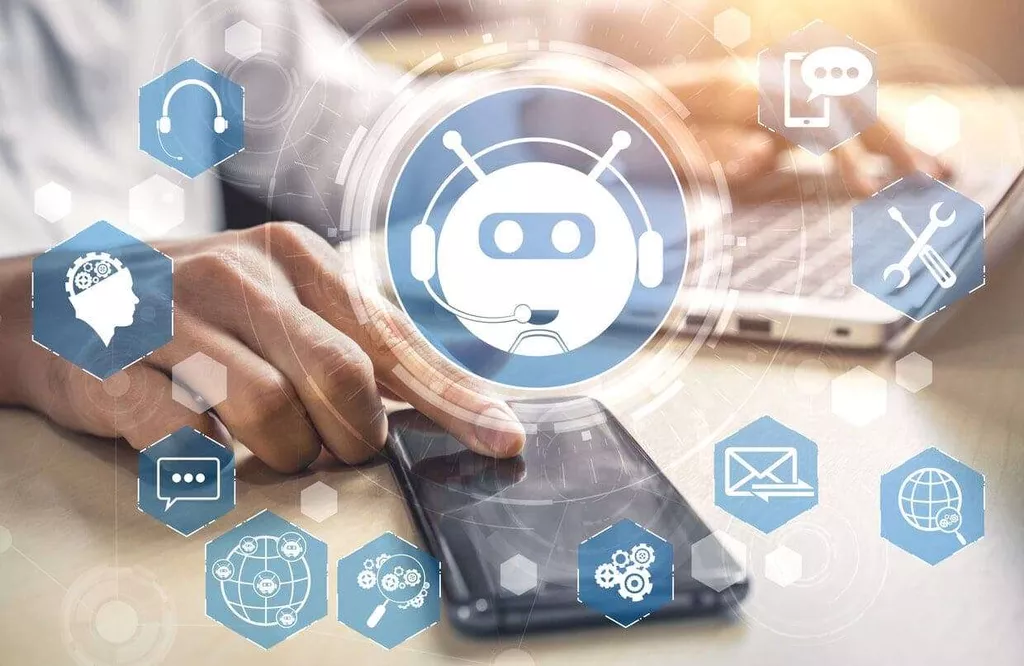New FDA Panel Weighs In on Regulating Generative AI in Healthcare
Artificial intelligence in healthcare: defining the most common terms

This iterative approach facilitated the refinement and validation of themes, culminating in robust and trustworthy conclusions drawn from the narrative responses. To enhance inter-rater reliability, these operational definitions were introduced to a graduate student who independently coded and sorted the data. This was followed by a collaborative session to revisit the coded data, ensuring that each response was accurately categorized within the agreed-upon themes.
In a study published in Nature Medicine, a group of over 35 scholars revealed that they’ve developed a new pancreatic cancer detection technology called PANDA
. By using AI-powered screening of CT scans, they were able to spot and properly identify pancreatic cancer with an accuracy rate higher than “the average radiologist”. Estimates say that, by 2032, the value of the global general AI healthcare market will reach $17.2 billion. Natural language processing (NLP) is a branch of AI concerned with how computers process, understand, and manipulate human language in verbal and written forms. These networks are unique in that, where other ANNs’ inputs and outputs remain independent of one another, RNNs utilize information from previous layers’ inputs to influence later inputs and outputs.
Dave P. has worked in journalism, marketing and public relations for more than 30 years, frequently concentrating on hospitals, healthcare technology and Catholic communications. He has also specialized in fundraising communications, ghostwriting for CEOs of local, national and global charities, nonprofits and foundations. Use separate datasets not used in training to assess accuracy, reliability, and generalizability. The application needs to be scalable to handle large healthcare datasets and institutions’ growing demands, ensuring efficient performance. Seamless integration with existing healthcare workflows and systems used by hospitals and clinics is crucial for practical application. Generative AI expedites drug discovery by simulating molecular structures and predicting their efficacy, facilitating the development of innovative therapeutics.
Reimagining the future of healthcare marketingAs we move forward, the convergence of Gen AI, predictive analytics and enhanced data frameworks will unlock unprecedented possibilities. The healthcare marketing landscape is being reshaped into one of meaningful engagement, smarter decisions and transformative outcomes. In late-2023, Google announced that it would roll out a special GenAI search experience for healthcare professionals, which will bring all patient information into a single system. With the help of Vertex, the company’s AI search platform, doctors will be able to quickly access patient records
without worrying about missing any information.
It’s able to predict and anticipate potential public health issues such as disease outbreaks and act as a warning system. Overall, generative AI has the potential to revolutionize the way we analyze and use EHRs, leading to significant improvements in patient outcomes and healthcare efficiency. Generative AI models lack the ability to incorporate personal information, making it difficult to offer effective health services8.
How responsible AI can improve health equity and access to care
The WHO estimatesa deficit of 10 million health workers by 2030, mostly in low- to middle-income countries. Based on the study’s objectives, the researchers self-developed quantitative and qualitative questions. To ensure content and construct validity, the questions were reviewed and refined by OT faculty colleagues with expertise in research. Quantitative data and qualitative data were obtained from students using the questions highlighted in Table 1 and collected through a survey administered in Microsoft Teams. Propose recommendations for integrating AI tools into OT curricula and suggest areas for further research based on the findings of this exploratory study. Alongside growing enthusiasm for generative AI, the survey highlighted gaps in adoption readiness and concerns that physicians feel need to be addressed before they can deploy these tools.
“Human-in-the-loop” must be an essential characteristic for most, if not all, AI healthcare deployments. Despite promising applications of generative AI, its full potential in healthcare remains largely untapped. Hospitals generate an astounding 50 petabytes of data annually, an amount equivalent to 10 million HD movies, yet 97% of this valuable information remains unused, according to the World Economic Forum. Despite the slow progress of some healthcare AI deployments, Vickers expressed optimism about these technologies’ potential to disrupt the EHR and precision medicine markets in 2025. Some healthcare organizations are working to establish this path, a trend that is likely to continue in 2025, according to Lynne A. Dunbrack, group vice president of public sector at IDC. A recent study from Brigham and Women’s shows that including more detail in AI-training datasets can reduce observed disparities, and ongoing research by a Mass General pediatrician is training AI to recognize bias in faculty evaluations of students.
He has focused on innovation, business and societal adoption of data, analytics and artificial intelligence over his 35-year consulting and academic career. Technical teams in healthcare systems can also access these advanced models through established platforms like HuggingFace, which provides a secure environment to evaluate, fine-tune and deploy AI models that meet specific clinical and operational requirements. Vickers continued that these technologies could also boost patient and caregiver experience, stating that AI-powered multiagent systems can help streamline the patient journey. Further, modalities like ambient listening are useful for reducing time spent on administrative tasks, allowing providers to focus more on direct care. Prioritizing AI awareness and training at all levels and job roles in the organization can drive better decision-making, improve effectiveness and increase satisfaction among employees and patients. Organizations can access free generative AI skills training to help upskill and support their workforce.
As the hype around generative AI continues, healthcare stakeholders must balance the technology’s promise and pitfalls. Similarly, only one in five physicians indicated that they believe their patients would be concerned about the use of these tools for a diagnosis, while 80 percent of Americans indicated that they would be concerned. Approximately two-thirds of physicians believe that their patients would be confident in their results if they knew their provider was using generative AI to guide care decisions, but 48 percent of Americans indicated that they would not be confident. They generally have a positive view, recognizing generative AI’s potential to alleviate administrative burdens and reduce clinician workloads (see Figure 2). However, they are also concerned that it could undermine the essential patient-clinician relationship. They are becoming more adept at extracting specific, clinically relevant information from the extensive and often unstructured text within medical records.
ChatGPT does not know our patients personally like we do so they may suggest things we know won’t work or be appropriate for the patient. It quickly provides you with a long list of treatment ideas you can implement into practice. Because the survey questions were measured on an ordinal scale, nonparametric tests were used.
AI has revolutionized various fields and has shown promise in various applications within the health professions (6). Capable of using algorithms to create new content and ideas, generative AI is increasingly integral to various aspects of medicine, offering significant improvements in diagnostics, clinical decision-making, and patient management. In the field of dermatology, AI is employed to enhance the diagnostic accuracy of skin cancer, rivaling even experienced dermatologists (7).
States are leading the way, with more regulations expected to come out as people become more familiar with the consequences around AI use-cases in healthcare. Budgetary constraints or commercial incentives have always made it hard to find accurate answers to chronic diseases. AI models support the identification of potential drug candidates for rare conditions through the evaluation of minimal datasets and the prediction of molecular structures.
Data Collection and Preparation
Additionally, there’s a lot of excitement around automation in more traditional areas, like updating customer dictionaries and regulatory code sets. After COVID-19, most organizations launched remote consultation services, where patients could get in touch with the doctor without actually visiting the hospital in person. The approach worked but left physicians overworked as they had to deal with both online and offline patients. Essentially, they could fine-tune models like GPT-4 on medical data and build assistants that could take basic medical cases and guide patients to the best treatments on the basis of their systems. If any particular case appears more complicated, the model could redirect the patient to a doctor or the nearest healthcare professional. This way, all cases would get addressed without putting the doctors under immense work pressure.
Research by the World Economic Forum has highlighted use cases for generative artificial intelligence (AI) that could, in part, overcome the challenges faced by a shortage of medical staff. Efforts to ensure each of the world’s 8 billion people has health cover have made little overall progress in recent years, according to the WHO, but organizations are determined to open up healthcare to wider populations. More than half the world’s population, that’s 4.5 billion people, lack full access to healthcare, according to the World Health Organization (WHO). From generative AI addressing worker shortages to alliances improving women’s health and neurological care, here’s how global healthcare can be improved. Echoing the need for cautious integration, 50% of students discussed the operational feasibility and the need for thorough vetting to ensure patient safety and relevance to specific conditions.
She said that using AI services can speed up the process of digitizing those files while a human verifies accuracy. During June’s AWS Summit in Washington, D.C., AI and population health experts discussed the benefits of generative AI tools as well as the guardrails needed to ensure these models don’t harm patients or communities. “Once they see the patient or interact with a patient, the provider is able to achieve this approval process within seconds versus days or weeks sometimes, which has a negative impact on patient care,” Farah explained.
The Prominence of Generative AI in Healthcare – Key Use Cases – Appinventiv
The Prominence of Generative AI in Healthcare – Key Use Cases.
Posted: Fri, 03 Jan 2025 08:00:00 GMT [source]
So, every visual that was included in our education and all of the videos, were all done with generative AI tools, and we told people that when they were taking the education. At the end of each lesson, it would say, ‘All of the visuals and the videos that you just reviewed were created with generative AI tools,’ so that they are starting to get an understanding of the power of what generative AI can do. We wanted to make sure people knew you cannot copy and paste patient health information into these tools unless this is a tool that has been reviewed and approved for that purpose by OSF.
It’s important to consider multiple types of data sources to create a more holistic picture of public and population health. As the industry moves toward adoption and expanded generative AI use cases, organizations must be prepared to implement governance and processes created with all stakeholders at the table. “We had to teach a model and create a structure that would sit around it, enabling it to understand what key items need attention and what the critical summary of events is,” Schlosser explained. “This way, the next shift knows exactly what to focus on to ensure continuity in care delivery.”
Synthetic medical data can be analyzed by artificial intelligence to identify patterns that humans are unable to, which comes in handy in drug development. It’s fast and accurate, which is why it is so good at spotting potential drug candidates and speeding up the drug discovery process. Generative AI in healthcare refers to the use of advanced artificial intelligence algorithms to create new, synthetic data that can significantly enhance patient outcomes, streamline clinical workflows, and reduce overall healthcare costs. RNNs are commonly used to address challenges related to natural language processing, language translation, image recognition, and speech captioning.
- OT students often lack the background knowledge to generate a wide variety of interventions, spending excessive time on idea generation rather than clinical reasoning, practice skills, and patient care.
- With more than 20 years experience in healthcare, Dr. Bassett provides oversight of Xsolis’ data science team, denials management team and its physician advisor program.
- In the retrieval stage, when receiving a user query, the retriever searches for the most relevant information from the vector database.
Embracing technologies like Generative AI is crucial for addressing these issues and improving operational efficiency, patient outcomes, and cost-effectiveness. But imagine if we could use AI in healthcare to represent every single cell in our bodies, i.e., a virtual cell that mimics human cells. Scientists could use such a simulator to verify how our cells react to various factors such as infections, diseases, or different drugs. This would make patient diagnosis, treatment, and new drug discovery much faster, safer, and more efficient. That’s exactly what Priscilla Chan and Mark Zuckerberg are working on – a virtual cell modeling system
, powered by AI.
This article was initially written as part of a PDF report sponsored by SambaNova Systems and was written, edited, and published in alignment with our Emerj sponsored content guidelines. Learn more about our thought leadership and content creation services on our Emerj Media Services page. Access to treatment and medication for disabling disorders and conditions of the nervous system, like Parkinson’s disease, Alzheimer’s, epilepsy, multiple sclerosis, and dementia, is limited – and in some cases – entirely absent. There’s a significant lack of data on women’s biology and insufficient research into women’s health issues. This is an open-access article distributed under the terms of the Creative Commons Attribution License (CC BY). The use, distribution or reproduction in other forums is permitted, provided the original author(s) and the copyright owner(s) are credited and that the original publication in this journal is cited, in accordance with accepted academic practice.
I think that if there is one sector where AI can make a massive difference, and where its potential can be shown to the fullest, it’s healthcare. Not only can it help people who lost the ability to move or speak regain it, but also prevent disease outbreaks, reduce the use of illicit substances, and accelerate drug discovery. If you’re looking to explore how AI can help your life science or digital healthcare project, reach out
– our team at Netguru would be happy to discuss how we could support you in this journey.
One of the popular generative AI healthcare use cases is that it assists surgeons in preoperative planning by generating detailed 3D models of patient anatomy and simulating surgical procedures, minimizing risks, and optimizing outcomes. GE HealthCare
and Mass General Brigham have entered into a partnership in an effort to co-create an AI algorithm that will improve the effectiveness and productivity of medical operations. Firstly, they’ll work on the schedule predictions dashboard of Radiology Operations Module (ROM). It’s a digital imaging tool that is meant to aid in schedule optimization, reducing costs and admin work and allowing clinicians to have more time with patients. Overall, generative AI has the potential to revolutionize the field of movement restoration for people with paralysis, leading to significant improvements in patient outcomes and quality of life. “One challenge we face, because generative AI is oftentimes related to clinical guidelines or clinical decision support, is what the gold standard is,” Bhatt said.
Utilizing patient data, Generative AI forecasts disease progression, facilitating early intervention and personalized treatment strategies. Generative AI healthcare elevates the accuracy of medical imaging analysis, enabling early disease detection and precise medical diagnosis. While over 25% of scientists
believe artificial intelligence
will play a crucial role in healthcare by 2033, they worry about potential shortcomings like high costs, stringent regulations, and AI hallucinations
, which can cause a lack of accuracy and misinformation.
The drug developers can save handsomely with the integration of generative AI in their modern-day development process. Organizations should first define their objectives, then select AI solutions that best fit those goals, rather than letting AI be the sole driver. By positioning AI as an enabler for people to achieve operational efficiency, healthcare organizations can leverage its capabilities in a way that is both purposeful and impactful. A. Generative AI in healthcare can significantly impact diagnostic accuracy by enhancing the interpretation of medical images, improving data synthesis for rare diseases, and aiding in the identification of subtle patterns or anomalies. Generative AI healthcare algorithms dynamically adjust treatment plans based on real-time patient data, optimizing therapy regimens for better outcomes and minimizing side effects. It’s truly remarkable how this advanced technology is transforming diagnostics, treatment personalization, and medical research, leading to better outcomes for patients and a more efficient healthcare system overall.
- Fifty-seven percent of clinicians have reported that excessive documentation contributes to burnout.
- Even after rapid digitization, most diagnostic agencies today rely on human experts to study medical images and write reports for patients.
- In this day and age, if they want to be a physician-scientist or a physician-engineer, which is the goal of the HST curriculum, they won’t just need to be a good listener and a good medical interviewer and a good bedside doctor.
- For instance, large language models (LLMs) were shown to generate biased responses by adopting outdated race-based equations to estimate renal function12.
The bigger question revolves around doing the work to establish norms and best practices for building AI governance structures for healthcare entities. He noted that creating this infrastructure and designing oversight frameworks to monitor these technologies will be crucial in the event of any regulatory loosening that might occur across industries. Cribbs said that predicting the potential regulatory environment heading into 2025 is challenging, but highlighted that regulation is just one factor in the conversation that healthcare stakeholders are having when navigating the AI landscape. These frameworks established guardrails to promote safety and protect Americans’ privacy within AI applications across industries; however, they are nonbinding, like the FDA’s recent guidelines, spurring some healthcare stakeholders to criticize them as insufficient.
Building on the growing role of AI in medicine, its application in health professions education holds the potential to transform how future clinicians are trained. By integrating AI into educational environments, it can complement human capabilities, promote critical thinking, and improve educational outcomes (10, 11). The integration of AI in healthcare education, particularly using tools like generative AI for intervention planning, is an emerging area with limited existing research. To the authors’ knowledge, there is limited research specifically exploring the use of AI to aid OT students in creating treatment plans. AI can help occupational therapy students generate intervention ideas that are personalized and efficient. Qu et al. (10) report that using AI tools such as ChatGPT can decrease cognitive load by automating routine tasks, allowing students to conserve mental energy for higher-order cognitive functions such as clinical reasoning.
Mayo Clinic and NVIDIA are pioneering this work to serve as a cornerstone for future AI applications in drug discovery, and personalized diagnostics and treatments. Technology providers must create customer-centric tools; healthcare organizations need to cultivate a data-driven culture balancing innovation with security; and policymakers should leverage frameworks that support responsible AI use and technological advancement. Another reason healthcare organizations should be cautious about generative AI implementation is that not all healthcare professionals have the knowledge they need to engage with AI in a meaningful and responsible way. The industry needs to be realistic about how quickly it can implement these tools, MacTaggart said.
They recommended that the FDA develop requirements for companies to implement and demonstrate how safeguards are protecting against built-in or learned biases over time. They also said the agency should develop standard definitions of terms and concepts to discuss generative AI, especially for key limitations such as out-of-distribution data, data drift, and hallucinations. Notably, the lack of consistent definitions for several terms related to generative AI presented challenges during the meeting on several occasions. The Digital Health Advisory Committee (DHAC) held its first meeting to offer guidance to the FDA on a slew of questions related to the development, evaluation, implementation, and continued monitoring of AI-enabled medical devices. “There is one thing I could point out – radiology is relatively the easiest place right now where you can deploy AI because everything has been digitized. We’re just talking about using images and text, and basically taking that existing data and feeding it into an AI.
“I think the fear of AI technology is starting to diminish. People see the power of it, and — as long as it has that governance and some guardrails around it so that it doesn’t negatively impact care — I think we’ll see some breakthroughs this year.” However, having a robust governance strategy for adopting and evaluating AI tools is critical to the success of these efforts. “Everybody wanted to jump in [to the AI space] because they saw the promise, and they wondered, ‘How do we apply that in healthcare?'” he explained.












